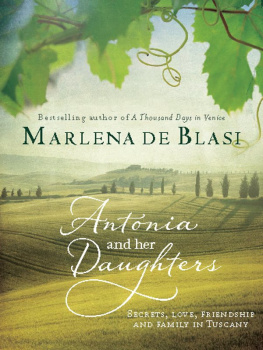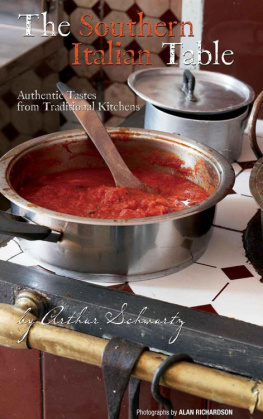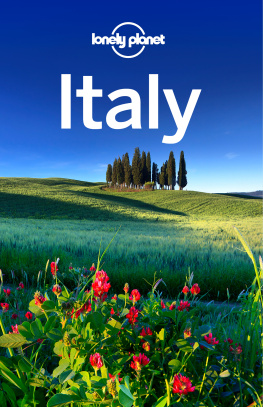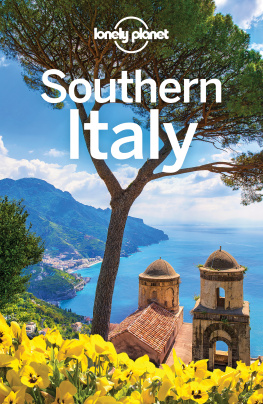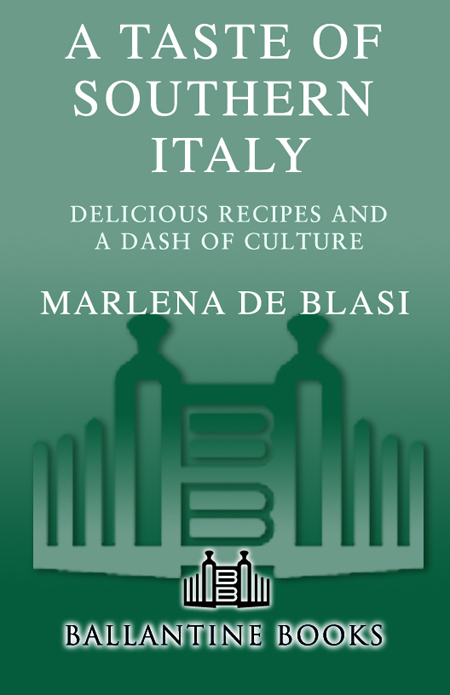PREFACE A PERSONAL NOTE
Though I've lived in Italy for twelve years nowthe first three in Venice, two more in the tiny Tuscan village of San Casciano dei Bagni and these last seven in the Umbrian hilltown of Orvietothis book was begun longer ago than that, in a very early era of my American journalist's life. Food and wine were my subject and Italy, with her endless gastronomic glories, was my beat. Journeying far off the predictable routes, I would tuck myself into the hamlets and villages between the cities, down the road from a cheesemaker in Sardinia, in a water- mill behind a lemon grove near Amalfi and, during a gelid February in Abruzzo, in an empty eleventh-century monastery, which noble edifice I set ablaze by lighting a fire in a hearth with a chimney suffocated by doves' nests. But these were just the beginnings, precursors to what has become a lifetime of adventures as wethe Venetian I married and Iproceed in an almost unbroken journey up and down and all over the face of this, perhaps, the most splendid country on earth.
When I sat down in the winter of 98 to write this book in the barely restored stable that was our home in Tuscany then, my desk pushed as close to the hearth as I could get it without scorching itthere was no other source of heat save the fireplace I remember how afraid I'd been, afraid of forgetting something, some phrase, someone's eyes, some sort of light. But it was all safe. I sat there with my memories and page after page of notes scratched in fancy journals and on pretty hotel vellum, on rough white butcher's paper, knowing that this would be a work made with great affection. Italy had, even by then, given me a thousand ways to love her, especially that part of her that begins at Rome.
It has always been true for me that to know a place, I must first know how it eats and drinks. Everything that doesn't happen in bed happens at table. Hence, this is, quite naturally, a cook's book. But as much and more even, it is a storybook, a gathering of small rhapsodies, impressions, initiations, romantic notions from a land where these are plentiful as stones.
The portraits of the people herein are true. They represent the astounding generosity, the simplicity of the southern Italian who, summed up, can be among the most gentle of humans. Spurred as often by the southerners' rejoicing in our curiosity as by our own impulses, Fernando and I pummeled the steeps of goat paths that masqueraded as country roads and snaked over thin mountain passes. We trekked into the farthest-flung villages and promenaded sunwashed avenues of great cities. Persuaded always by kindness, we went as far as the edges of her, to the tiniest, last pieces of Italy that crumble into the Mediterranean and float closer to Africa than to the peninsula itself. Whether we asked for a wine or wild celery, an heirloom formula for caponata, a method to caramelize the flesh of a yellow pumpkin, another one for gelato with wild rice, to bake bread in a three-hundred- year-old forno, to gain passage on a tuna-harpooning vessel, to sleep in a feather bed, they were ours. But still I cannot tell you that the south is all of pleasure. She presents jolts, delusions, her primitiveness causes predicaments. Nonetheless, as you will see, she is clever at insinuating her sentimental self inside your own. At least that's how she was and how she is, still. But who knows for how long?
As I was once afraid of forgetting something, now I fear more the truth that nothing stays the same. As are all chroniclers who are charmed by their subject, I mourn the vanishing pieces of it, its inexorable passages, caused by nature or made by man. That was then and so this cannot be. All this is to say, hurry.
Somewhere about 40 B.C., Horace wrote, grievingly, about the sour taste of the wild leeksonce sweet as hyacinth bulbswhich grew up from the stony flanks of his Lucanian villagenow the region of Basilicata. And he liked neither the way in which Marcellus' tomb was being cared for nor the strange tilt of the headdresses that the younger village women had taken to. He'd been gone a year.
Maggio, 2005 Via del Duomo 34 Orvieto
INTRODUCTION
The food of Italy's southern regions comprises a much more varied cuisine than that of the north. Many still think that southern food is all of a piece, a slim repertoire of dishes unfailingly announced by a great whiff of garlic and brought forth deep in a wash of some thickish red sauce. Not true. Southern food has a range of style and savor that sweeps from piquant to delicate, embracing restraint and sensitivity as often as it demonstrates aggressiveness. It is created by cooks with the courage to let a food be, to let it taste like its own good self. Southerners revere the purity of flavors and textures of a food. They are content to tear a few leaves of wild mint over a roasted fish, to grill fat prawns in lemon leaves, to roast suckling lamb in a terra-cotta pot with a great heft of sweet butter. It is a cuisine that aspires to dignity even in the midst of insufficiency. It is called la cucina poveracooking of the poorand it is so in the sense that it was and is and shall be always a cuisine that, from necessity, asks its own short litany of components, stuffs primordial to each piece of each province of each region of the south.
Southerners coaxed up what they might from patches, more often than not, all of stones and sand, collected weeds and herbs from seashores and mountainsides and ancient woods. With rough-ground grains they baked coarse, thick-crusted breads and rolled out their own rustic versions of pasta. When they had flesh to eat, it was from the hunt or fished up from rivers and the sea. Following herds of sheep and goats gave them milk and cheese. Courtyard animals were often a luxury in the south. A man from Calabria told me once that his father thought himself a rich man when there was surfeit enough from his table to fatten a pig. But who can call a food poor such as swordfish cured under sea salt and set down on the table with a puckery lemon marmalade, or wild hare cooked with honey and chestnuts or poached quail set to cool in a sack of wild herbs?
More often than do northerners, southern Italians still eat as did their fore- bears. Those who can now afford to eat from the universal Italian table still mostly choose the comfort of their ancestral dishes, they being nourished by the thread of sameness the old foods provide. A southerner's way of cooking and eating is part of his patrimony as much as are the ruins of a Greek temple. Southern food is the wellspring of nearly three thousand years of the impresses of tribes and conquerors from the Etruscans through to the last reign of the Bourbon kings, each of them having inlaid some ornament of its own cuisine into the southern culture. Southern food is African and Byzantine, Spanish, French, and Greek. On the moors of Sardegna, it remains the food of Stone Age hunters.


